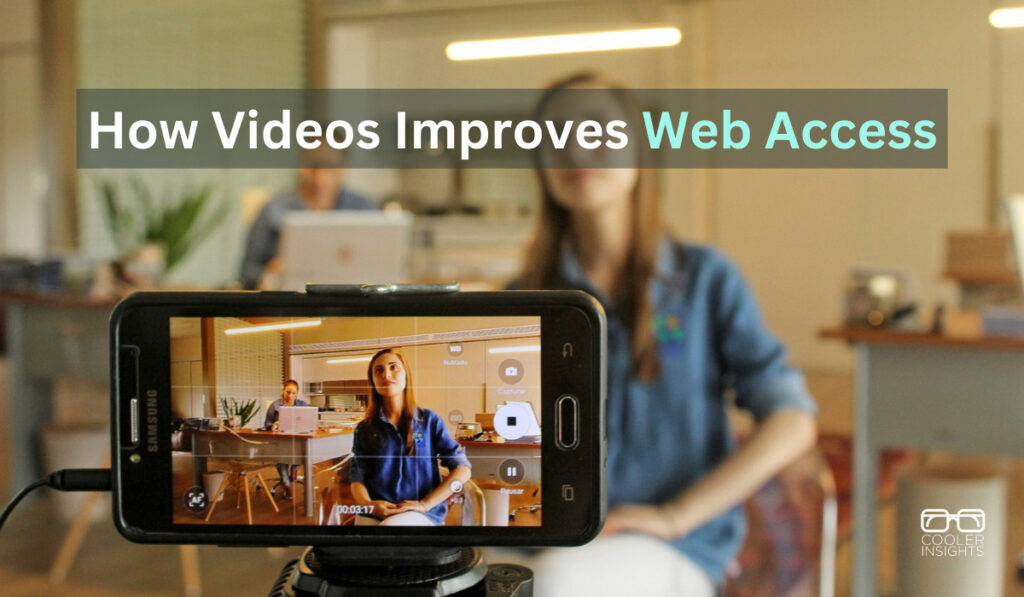
Wish to cater to a wider range of audiences in your emails and other online content? Consider including a video.
The goal for everything on the web is to be accessible to everyone. Sadly, however, we aren’t anywhere close to achieving this goal.
Only a sliver of websites worldwide meets accessibility standards. And if you consider online content outside of websites, that percentage gets even smaller.
That said, marketers play an integral role in making the web more accessible. Whether it’s emails, a website, social media content, or other forms of marketing communication, you can take extra steps to ensure all of your marketing is accessible.
Before we offer six tangible tips for making your content more accessible, let’s explore why using video content in your emails and other marketing communications makes them more accessible.
People Want to See More Video Content
Giving people what they want is a massive part of making the web more accessible. And what they want is more video content. Videos are quickly moving into the top spot on the preferred content list.
We’ll dig into why videos in and of themselves are more accessible, but creating and publishing videos generally makes the entire web much more accessible.
It’s Accessible on Many Devices
Video content can make your marketing more accessible because you can play it on nearly every device. When marketers format the videos correctly and use responsive designs, viewers can enjoy them on the devices they’re comfortable with. You can also set up videos to be viewed with assistive devices, furthering their accessibility.
You Can Accommodate the Needs of a Wide Range of Disabilities

Videos can accommodate the needs of individuals living with a wide range of disabilities.
For example, someone with a hearing impairment can still enjoy a video with captions. Someone with a visual disability can enjoy the audio of a video. Or, a person living with mobility issues can control a video set up with voice recognition software.
When you cover as many details as possible when creating video content, you can cater to the needs of individuals living with a variety of disabilities, something so lacking today.
Video Content is Easy to Absorb
People love video marketing not just because videos are entertaining but also because they’re easy to absorb. For example, it’s much less taxing on the mind to watch a video than it is to read a 2,000-word blog post on the same subject.
Add subtitles and captions and ensure the visuals and audio are high-quality. This way, even more people can comprehend the message in your emails or other marketing content containing videos.
It’s Another Option for Viewing Your Message
Everyone is different. Not all of your audience will want to see your email, social media, or website content similarly. So, if you don’t offer the same marketing message in different formats, you risk not connecting with as much of your audience as possible. Video content should absolutely be one of those formats.
Tips for Making Content More Accessible
Whether it’s video, written, audio, or other visual content, your primary goal should be to ensure it’s accessible to everyone, no matter the channel they’re engaging with it on. You won’t be able to conquer this goal in one day. However, working toward it with each piece of content is critical.
Implement these six tips to make your content more accessible.
Learn the ins and outs of web accessibility
First and foremost, you must learn the ins and outs of web accessibility. If you aren’t aware of the accessibility guidelines, it will be tough to ensure your content abides by them.
Start your studies on the Web Accessibility Initiative website. It’ll have the most up-to-date accessibility guidelines and resources. Don’t try to take in all of what’s to learn at once. Instead, break up your education into manageable sections and commit to combing through at least one a week.
If you aren’t comfortable with the self-education path, sign up for web accessibility training classes. These classes range from introductory, where you learn the basics of web accessibility, to expert, where you can dig into actually developing a universal web design and accompanying content.
Pay special attention to the language you use
When you’re ready to create marketing videos and content, you must pay special attention to your language. The last thing you want to do is use an ableist term or language that will offend anyone in your audience.
So, ensure the actual language and tone in your marketing are as inclusive and respectful as possible. Familiarize yourself with ableist terms and potentially harmful assumptions people make about different groups.
Participating in diversity training can also be beneficial. It can teach you the best ways to communicate with diverse groups. You can openly discuss discrimination, racism, and prejudice in a safe space. You can also get advice on ensuring your content is friendly and equitable to all.
Add subtitles and captions to all videos
We briefly touched on this above, but we’ll dive deeper into the importance of subtitles and captions for increased web accessibility in this section.
We hear a lot about how critical it is to add captions to your videos to make them more accessible, particularly for those with a hearing-related disability. However, subtitles are just as crucial.
If English isn’t the primary language for a large portion of your viewers, they won’t be able to understand your videos, thus making them inaccessible. Adding subtitles in various languages ensures more non-English speaking individuals can enjoy and engage with your video content.
Take the time to write and add subtitles and captions to all of your videos. Of course, doing so will require extra work and effort.
When it comes to adding in subtitles, you have to choose whether you or a third party will draft your subtitles. After that comes the actual creation process, editing, and proofreading. Then, you’ll need to translate your subtitles into your chosen languages and add them to your videos.
Captions have a similar process. But all of the work is worth it if it means your videos are accessible to a diverse group of viewers.
PS — Check out the auto-captioning features on most social video apps like TikTok, YouTube, and Instagram (Reels).
Provide high-quality visuals and audio
Of course, you can put out videos and other subpar marketing content, and it’ll still see some engagement. However, if you truly want to prioritize accessibility, you’ve got to focus on high-quality videos, visuals, and audio.
Record your videos with suitable equipment. Use editing software to ensure they’re visually appealing and that the audio is quality.
Your videos should ultimately be well put together, and the marketing message you’re trying to convey should be clear.
Use high-contrast colors
It’s essential to consider color contrast in not just your videos but all of your marketing content. Even if the marketing communication is all written content, you must be mindful of the color you use for your font and the background.
Color contrast impacts how easy it is for someone to read or view your content. High-contrast colors help make your marketing content more eye-catching and visible.
Familiarize yourself with the color contrast ratio proposed by Web Content Accessibility Guidelines (WCAG) to ensure your color combos appeal to the most.
Focus on easily digestible content
Simply put, your marketing content should be easily digestible, whether emails, videos, podcasts, infographics, blog posts, or other marketing communication.
People shouldn’t finish engaging with your content and think, “Wow, that was tough to get through.” Even worse, people shouldn’t feel so tasked by your content that they don’t finish consuming it at all.
Instead, your audience should get through all of your content effortlessly. It shouldn’t ever feel like a chore. You can ensure your content is easily digestible by:
- Using simple language;
- Leveraging short videos;
- Adding alt-text to your images;
- Using supporting images and visuals;
- Breaking up long videos with transitions;
- Sticking to one topic in each piece of content;
- Using the correct format for each type of content;
- Guiding your audience’s actions with proper calls-to-action (CTAs);
- Using headings, sub-headings, small paragraphs, and bulleted lists in your written content.
If you aren’t using videos in your emails and other marketing content, you’re missing out on a significant opportunity to contribute to increased web accessibility.
Continue to study the accessibility benefits of videos and implement the tips above so that more of your audience can relish — and respond to — your marketing.

BIO: Ainsley Lawrence is a freelance writer from the Pacific Northwest in the United States. She enjoys writing about better living through education and technology. She is frequently lost in a mystery podcast.
